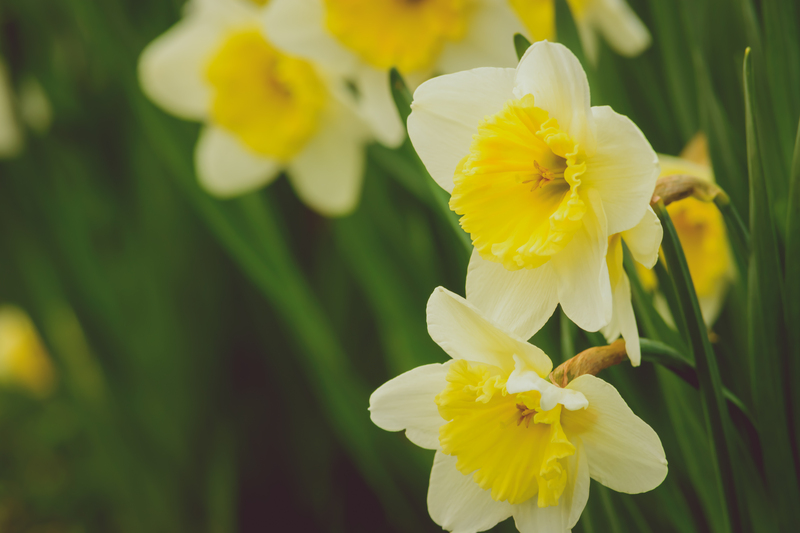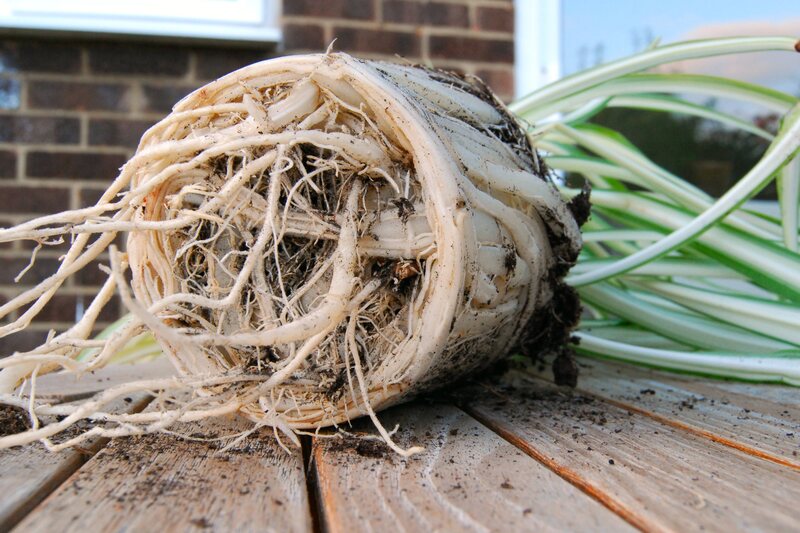Economical Garden Hacks: 5 Low Maintenance Ideas to Try
Posted on 15/09/2025
Economical Garden Hacks: 5 Low Maintenance Ideas to Try
Welcome to your go-to guide for creating a thriving outdoor oasis without breaking the bank or spending every weekend on upkeep! If you're a busy homeowner or an aspiring gardener seeking economical garden hacks and low maintenance gardening ideas, you're in the right place. In this comprehensive article, we'll explore five inventive, budget-friendly tips for designing and maintaining the ultimate low-maintenance garden. Whether you have a large backyard or a compact balcony, these practical suggestions will help you grow beautiful plants and keep your garden healthy and lush with minimal effort.

Why Embrace Economical, Low Maintenance Garden Solutions?
Gardening is an incredibly rewarding hobby, but it can also be time-consuming and expensive. By adopting budget-friendly and easy-care approaches, you can:
- Save time spent on repetitive garden chores
- Reduce water and plant costs
- Minimize labor without compromising on beauty
- Boost your home's curb appeal sustainably
1. Choose Drought-Resistant and Native Plants
The Power of Smart Plant Selection
One of the smartest budget garden hacks is to fill your exterior spaces with drought-tolerant and native plants. These species are well-adapted to your local soil, rainfall, and climate, meaning they require far less water, fertilizer, and ongoing care than exotic imports.
- Saves Money: Eliminates the need for costly irrigation systems and frequent watering.
- Promotes Biodiversity: Supports local wildlife, including pollinators and beneficial insects.
- Reduces Pests: Native plants are naturally more resistant to local pests and diseases.
- Easy Maintenance: Less pruning, deadheading, and soil amendment required.
Examples of Drought-Resistant Favorites
- Lavender: Aromatic, colorful, and practically thrives on neglect.
- Sedum: Low-growing and perfect for sunny rock gardens.
- Russian Sage: Durable and eye-catching with silvery foliage.
- California Poppy: Hardy, self-seeding, and ideal for wildflower meadows.
2. Use Mulch to Conserve Moisture and Suppress Weeds
Mulching: The Ultimate Low Maintenance Garden Secret
If you do just one thing to slash garden chores, it should be mulching. Organic mulch--like shredded bark, straw, pine needles, or compost--offers a triple win for frugal gardeners:
- Prevents weeds from sprouting by blocking sunlight
- Reduces watering needs by trapping soil moisture
- Enriches soil as it slowly breaks down into nutrients
A two to three-inch layer is generally ideal. For the best results, refresh mulch annually in spring. If you're on a budget, use grass clippings, autumn leaves, or wood chips from a local arborist for free or low-cost mulching.
Creative Mulching Ideas
- Pebbles or Gravel: Long-lasting and great for modern, minimalist gardens.
- Cardboard or Newspaper: Place under other mulch for an extra weed barrier--just make sure ink is soy-based and papers are chemical-free.
- Compost: Adds fertility to beds and is perfect for veggie patches.
3. Repurpose Household Items as Garden Solutions
Upcycling: Cheap, Eco-Friendly, and Fun!
Why buy new when your home and shed are full of potential garden materials? Upcycling household items is a key part of economical gardening and helps reduce waste at the same time. Here are some time- and money-saving ideas:
- Plastic Bottles: Cut off the bottoms to use as mini-greenhouses for seedlings or poke holes in the cap and bury as slow-release waterers for thirsty plants.
- Old Takeout Containers: Perfect for seed trays, mini-planters, or even as slug-proof covers (just poke a small hole for airflow).
- Egg Cartons: Biodegradable seed-starting pots. Plant seedlings straight into the soil, carton and all!
- Pallets: Slatted and free or cheap, pallets make fantastic vertical gardens, compost bins, or raised beds.
- Wine Corks or Broken Terra Cotta: Use as mulch to help retain water in pots.
This approach is not only frugal but also gives your low effort garden a unique personal touch.
4. Install a Simple Drip Irrigation System
Water Conservation Meets Convenience
Watering can be the most labor-intensive (and expensive) aspect of yard care. Installing a drip irrigation system is an affordable garden hack that delivers water right where it's needed--directly to your plants' roots.
-
Why Drip Irrigation?
- Reduces water waste compared to sprinklers
- Prevents fungal diseases by keeping foliage dry
- Can be automated with low-cost timers for hands-off gardening
- Improves plant health and growth
- Saves on utility bills
You can buy an inexpensive DIY kit at most garden centers or make your own using recycled soda bottles and tubing. For smaller spaces, use olla pots (unglazed clay pots filled with water) to slowly seep moisture into soil, keeping roots hydrated with almost no maintenance.
5. Opt for Perennials Over Annuals
Perennial Power: Set It and Forget It
Planting perennials instead of replanting annuals each season is the ultimate budget and time saver. Once established, perennials come back every year and generally need less fuss than annual flowers or vegetables.
- Less Replanting: Invest once for years of flowers or foliage.
- Stronger Root Systems: Drought-tolerant and less prone to pests.
- Lower Watering Needs: Especially if you choose native or adapted varieties.
- Great for Pollinators: Perennials often attract bees and butterflies.
Favorite Perennials for Low Effort Gardens
- Daylilies: Prolific bloomers and adaptable to a range of soils.
- Hostas: Perfect for shady areas and require little attention.
- Coneflowers (Echinacea): Vibrant, hardy, and medicinal.
- Black-eyed Susans: Sun-loving and self-seeding for natural drifts.
- Ornamental Grasses: Provide movement and structure year-round.
Bonus Budget-Friendly Tips for the Ultimate Low Maintenance Yard
Implement No-Dig Garden Beds
- No-dig methods involve layering organic matter like compost and mulch over newspapers or cardboard right on top of weeds or existing grass. This smothers weeds, feeds plants, and preserves soil structure - no back-breaking digging required!
Group Plants by Water Needs
- Planting species with similar water and care requirements together makes watering and fertilizing more efficient, cutting both labor and waste.
Install Groundcovers Instead of Grass
- Ditch your high-maintenance, water-hungry lawn and opt for easy-care groundcovers like creeping thyme, clover, or mondo grass. They require less mowing, watering, and general care.
Create Container Gardens
- Container gardens make plant care easier, restrict weed growth, and offer flexibility for small spaces, patios, or porches. They're perfect for herbs and compact perennials.

Frequently Asked Questions About Economical & Low Maintenance Garden Hacks
Q1. What is the easiest garden style to maintain on a budget?
A: Rock gardens with succulents or native wildflowers are among the most affordable and easiest styles to keep looking great year-round. Both require little watering, minimal pruning, and almost no feeding.
Q2. How can I keep my garden weed-free cheaply?
A: Start with thick layers of organic mulch and use recycled cardboard as a weed barrier under paths or beds. Regularly pull young weeds before they seed, and fill empty spaces with groundcovers or dense plantings.
Q3. Can I have a low maintenance vegetable garden?
A: Absolutely! Focus on planting perennial veggies like asparagus, rhubarb, or walking onions. Incorporate mulch, drip irrigation, and try raised beds or containers to cut down on weeding and watering.
Q4. What are the most cost-effective soil improvements?
A: Use homemade compost, aged manure, or leaf mold to enrich your soil. These add nutrients for free or very low cost, and improve soil health without resorting to synthetic fertilizers.
Conclusion: Enjoy a Thriving, Effortless, and Affordable Garden
Creating a lush, inviting garden doesn't have to cost a fortune or demand every spare hour. By selecting drought-resistant plants, using mulch, upcycling household items, installing simple watering systems, and opting for low-maintenance perennials, you can build a beautiful landscape on a shoestring budget.
Remember, the best economical garden hacks are about working with nature, not against it. Choose plants suited for your site, improve your soil organically, and design your garden so that it's self-sustaining whenever possible.
With these budget garden tips and low-effort solutions, you'll soon spend more time enjoying your outdoor haven--and less time and money maintaining it. Happy gardening!

